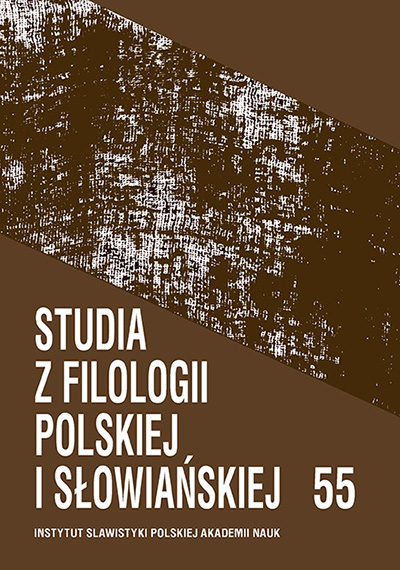Особливості семантичної структури діалектних текстів про важливі історичні події початку ХХ століття
Features of Semantic Structure of Dialectal Texts Concerning Important Historical Events of the Early Twentieth Century
Author(s): Kateryna HlukhovtsevaSubject(s): Language and Literature Studies, Theoretical Linguistics, Semantics, Philology
Published by: Instytut Slawistyki Polskiej Akademii Nauk
Keywords: dialectal text; texteme; macrotext; semantic text structure; differential trait; multidimensionality of dialectal text; explicit and implicit meaning in dialectal text
Summary/Abstract: This article analyses the semantic structure of dialectal texts concerning important historical events of the early twentieth century, describes the characteristics of their linguistic representation and presents dynamic aspects of sense formation. The analysed material comes from the older generation of respondents interviewed in the course of fieldwork conducted in 1990–2018 in the area of Ukrainian Eastern Slobodian dialects, i.e. in the far east of Ukraine (in terms of current administrative divisions – the Luhansk region). The semantic structure of oral memory texts under consideration is reflected in conceptual clusters characterised by semantic-logical features of processuality, actionality, temporality, agentivity, denotativity and axiology. These clusters include designations of phenomena and names of their referents, linked by subject relations into a comprehensive semantic complex, a nominative chain which reflects the semantic network of the text. The author argues that in the conceptual structure of a texteme concerning historical events of the early twentieth century we can distinguish central and secondary differential features. For example, the texteme holodivka (голодівка) ‘hunger, famine’ is characterised by such central differential features as ‘enumeration of plants that could be used as food’; ‘names of dishes that could be made without flour’; ‘overall assessment of the situation’; ‘enumeration of events that people had to endure’; ‘stories about how people survived in difficult conditions’; ‘how the dead were buried’; and such secondary differential features as ‘who was responsible for the famine in the country’. The components of this texteme also include reports of cannibalism, appropriation of someone else’s property and accusations against people who deprived villagers of food, guarded kolkhoz property so that nothing would be taken away, etc. These memory texts, stories in which users of dialects of the Luhansk region assess important social events of the early twentieth century, constitute one macrotext that condemns crimes against the nation – the resettlement of farmers to Siberia, coercive collectivisation, the Great Famine of 1933, alienation from anything that is Ukrainian. The evaluation of these events is mainly verbalised by means of exclamations, words expressing a strong emotional assessment.
Journal: Studia z Filologii Polskiej i Słowiańskiej
- Issue Year: 2020
- Issue No: 55
- Page Range: 1-20
- Page Count: 20
- Language: Ukrainian

